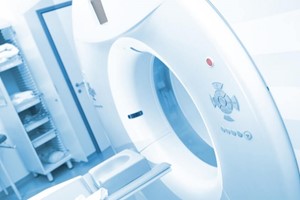It’s no secret that the healthcare sector is a fast-paced vertical. Scheduling appointments, addressing patient questions, advising patients, taking follow-ups, and documenting patients are all responsibilities that must be completed simultaneously daily.
As a result, healthcare companies must rely on modern technology to ensure the seamless operation of their processes and to avoid unnecessary interruptions along the way. In this piece, we’ll explore how call tracking software, such as the Call Logic call distribution platform from Phonexa, improves customer satisfaction while simplifying the organization and storage of vital medical information.
Importance of Inbound Calls
Some patients will check their symptoms directly on the WebMD website, while others will opt to apply for health insurance online and even by phone. Before calling a doctor, most people conduct extensive online research, even if it’s just to answer a few questions.
They learn about healthcare providers via word-of-mouth, online research, patient reviews, browsing websites, and social media. Patients can even check if the prices for your medical services are up to date online, but they won’t be entirely sure until they call your business directly.
Inbound phone calls, in particular, have long played an essential part in the customer journey in the healthcare business. According to a Google study, 56% of patients arrange their healthcare appointments over the phone, even after conducting thorough online research. Therefore, speaking with patients over the phone may be an excellent approach for healthcare providers to lead them on the correct path while driving marketing and revenue objectives.
Although telemedicine solutions exist for both physicians and patients, people, as it turns out, just want to hear a real person’s voice if they are uncertain. For example, many patients are asking how their business operations have altered or if they still have access to the same treatment alternatives as before.
Many healthcare marketers have neglected to address the gap between online and phone tracking tools for quite some time. Luckily, call tracking software connects with their existing analytics systems to give them a complete picture of the patient acquisition path.
How Does Healthcare Call Tracking Work?
Call monitoring software is a technology that allows you to track user activity throughout phone calls.
The data gathered by this software provides critical information such as which platforms are generating calls, how to improve the customer experience while on the phone, and so on.
However, improving the customer experience is not the only purpose of call tracking. With call tracking software, healthcare marketers may map the customer journey up to the moment of the phone call by using call tracking software. This enables marketers to understand which print and digital campaigns, website resources, and keywords are generating calls, allowing them to allocate budgets and adjust their business strategy accordingly.
Benefits of Call Tracking Software
It might be difficult to decide on a single call tracking service that can meet all of your needs. Luckily, we have done the legwork for you and compiled a list of the features that explain why Phonexa’s call monitoring software is suitable for your healthcare company.
-
Caller Profiles
Almost every call monitoring software has this function by default. As a result, your system records a wealth of information about the caller, including their location, online activities, and previous history. The greatest benefit of this feature is the increased ability to anticipate the patient’s next action, increasing conversion rates. All the data you need to acquire insurance leads that fit your specifications and have a higher conversion rate can be found with a more advanced tracking system like Phonexa’s Call Logic
2. IVR (Interactive Voice Response)
Any business implementing an IVR system may enhance the customer experience and get valuable insights from customers’ questions. For example, the customer service process improves when callers are first greeted by a voice response system that prompts them to initiate a discussion before connecting them to a human operator.
A customer connected to an IVR will be asked questions to help determine the subject of their call. An IVR’s ability to collect this information is a time- and effort-saving bonus in the conversion process, providing organizations with a complete picture of their customers.
3. CRM (Customer Relationship Management) Integration
Call tracking software must be compatible with the customer relationship management system already in place (in case you have one implemented already). A core component of better patient experiences is integrating patient and customer data from initial contact through appointment follow-up.
4. Call Recording and Analytics
Keeping tabs on every phone conversation might seem like an excessive data collection effort. But if used correctly, call recordings from patients may be an invaluable tool for marketing and customer service purposes.
The data on patients’ problems, patterns of complaints, service requests, etc., are recorded and compiled using a tracking tool. It then compiles this data into an easy-to-understand manner that can be used to hone your marketing and branding strategy.
With real-time analytics support, your staff can look up relevant customer data. At the same time, they speak with callers, allowing them to provide a higher level of customized service and fostering more trust and better business outcomes.












